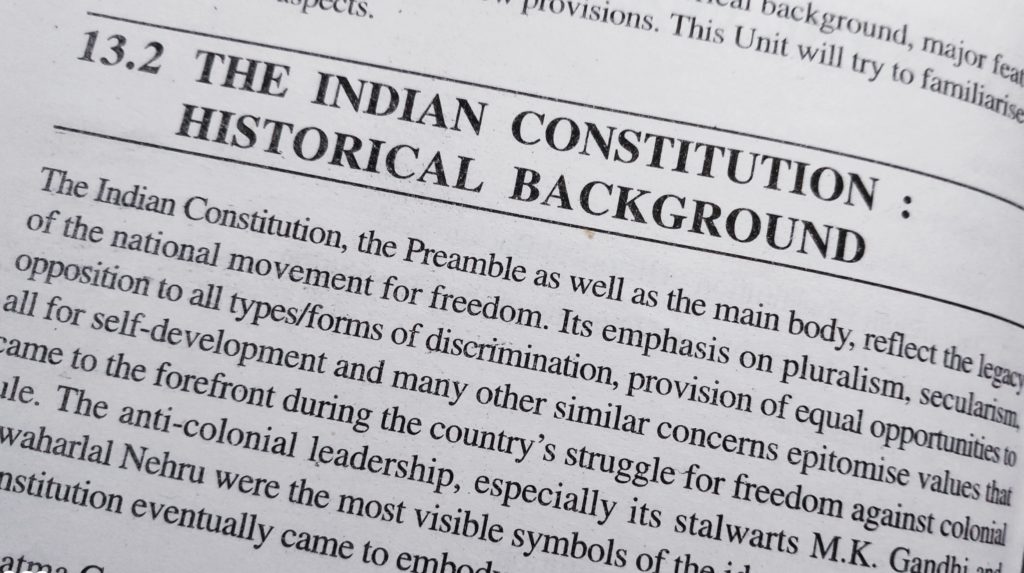Historical Background of The Indian Constitution : History of Indian constitution: The Indian Constitution, the preamble as well as the main body, reflect the legacy of the national movement for freedom.
Historical Background of The Indian Constitution
Page Contents
The Indian Constitution, the preamble as well as the main body, reflect the legacy of the national movement for freedom.
Its emphasis on pluralism, secularism, opposition to all type or form of discrimination, provision of equal opportunities to all for self-development.
And many other similar concerns epitomize values that came to the forefront during the country’s struggle for freedom against colonial rule.
The anti-colonial leadership, especially its stalwarts M.K. Gandhi and Jawaharlal Nehru were the most visible symbols of the ideas and values that our Constitution eventually came to embody.
Historical Background of The Indian Constitution
Mahatma Gandhi, as you would perhaps know, started this political
career and public life protesting against the policies and practices of the colonial government in South Africa.
He came to Indian in around 1915 and plunged into the fight against British Colonialists. These experiences of combating colonialism shaped his world – view to a very great extent.
He came to oppose discrimination of all types/form and this strong anti-discriminatory stand of Gandhi amply reflected in the Preamble as well as the main body of the Constitution.
Gandhi’s emphasis on small and cottage industries, his opposition to intoxicants also reflected in our Constitution.
Mahatma Gandhi’s declared political heir, Jawaharlal Nehru, an internationalist in outlook and like Gandhi, opposed to colonialism and imperialism everywhere.
He visualized and independent foreign policy for free India and this is seen in the Constitution that finally framed and later on, adopted in 1950.
Nehru was also a strong votary of a secular, plural polity. This secularist, pluralistic vision of his is showcase well in the constitution. His emphasis on developing a scientific temper.
This is because Nahru vehemently opposed to obscurantism, superstitions and dogma of any kind.
His learning towards the Soviet model of planned economic development reflected in the Constitution that adopted the socialist mixed economy as the future path of development.
History of Indian constitution
The Indian leadership also inspired by the American Declaration of Independence (1776), the French Declaration of the Rights of Man (1789), as well the Constitution of the Irish Republic.
The french revolutionary slogan of Liberty, Equality and Fraternity finds an echo in the Preamble of our Constitution.
It should interest you to know that our constitution has been in the making since the Indian Councils Act of 1861.
Historical Background of The Indian Constitution
It has also drawn upon the India Councils Act of 1892, the Morley-Minto Reforms of 1909, the Indian Independence Act of 1947.
The provision in our Constitution for a parliamentary form of Government, legislative councils, provincial autonomy and many other features are traceable to the above mentioned Government Acts of British times.
Thus it should have by now become clear to you that the Indian Constitution has a rich historical background preceding its formulation.
If you like this article then please comment and share in social media with your friends.
For more reference click here


